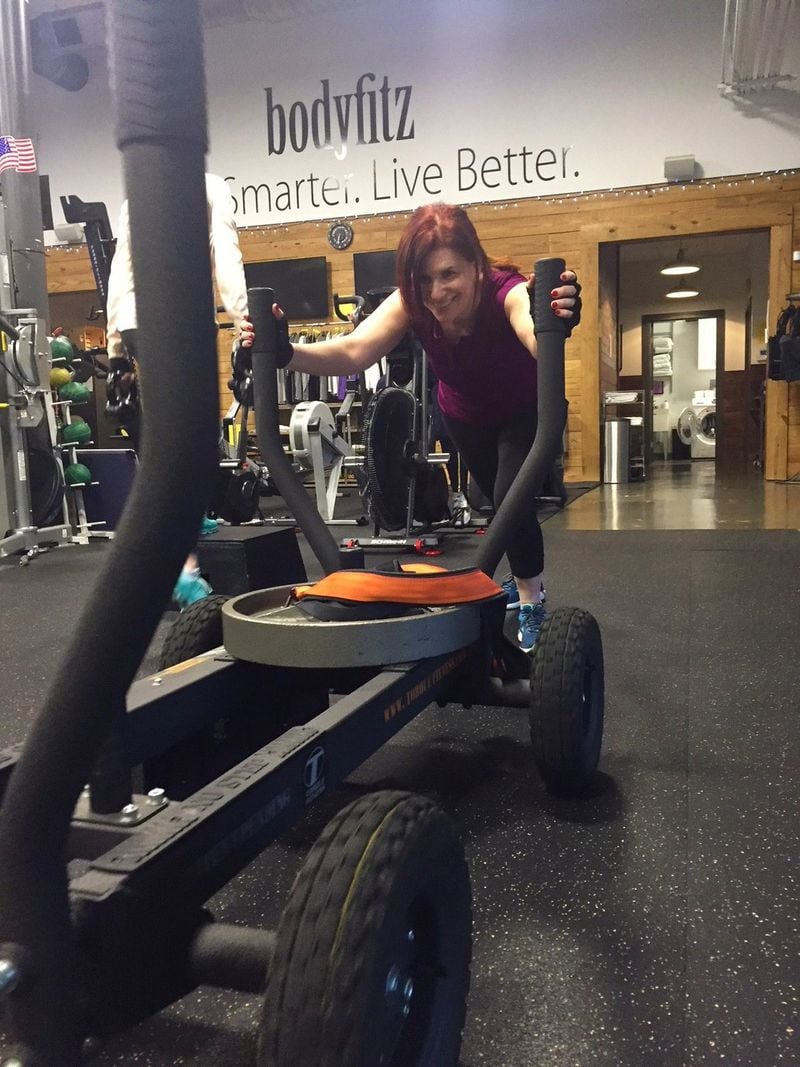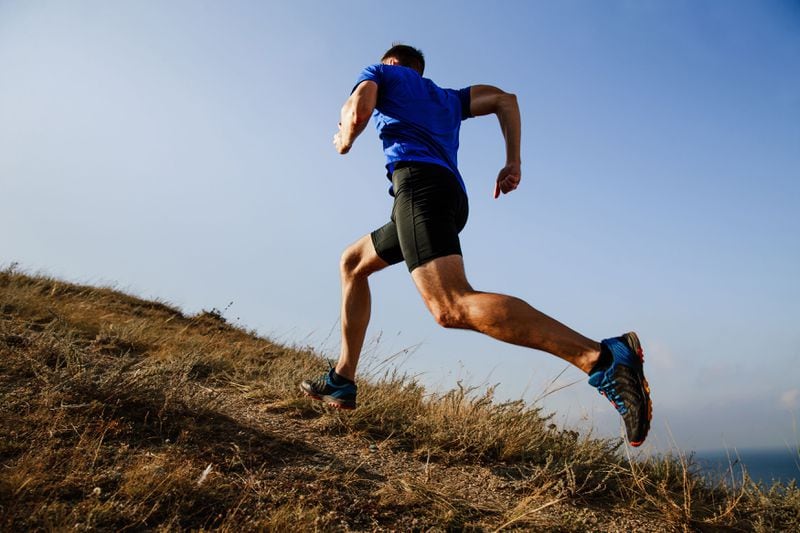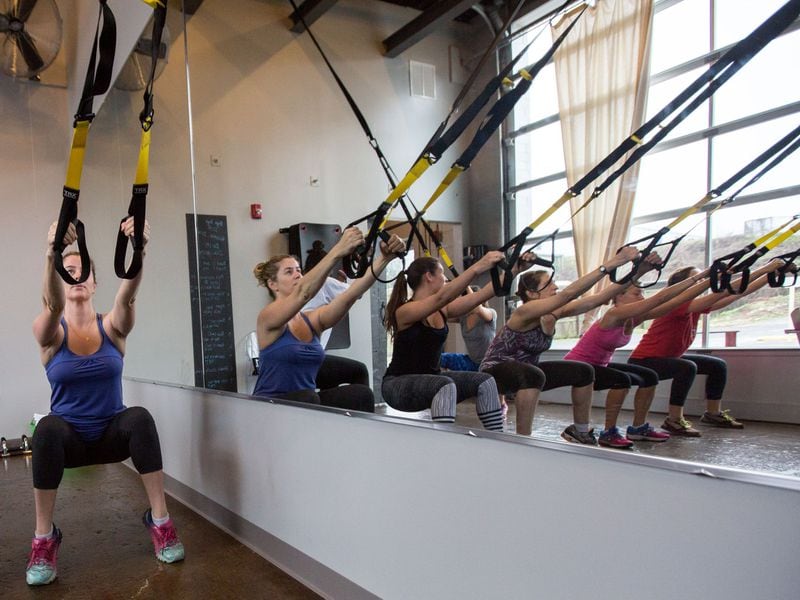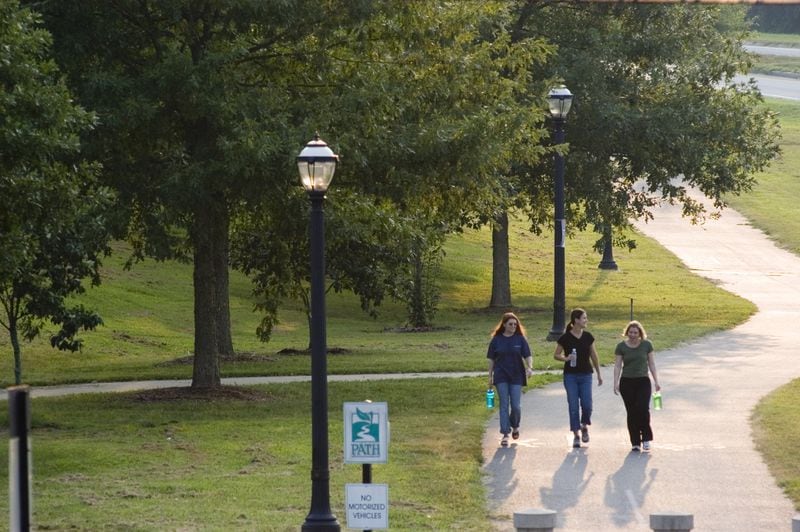Several years ago, Shira Miller of Atlanta lost 50 pounds by eating better and getting regular exercise. But when she hit her late 40s, a demanding corporate job with long hours and travel made it harder to eat healthy and fit regular exercise into her daily schedule.
By her 50th birthday, she found herself in line with most Americans and Georgians who are not getting enough exercise.
She was out of shape, with 12 pounds returning to her 5-foot-4-inch frame. Miller, however, recently found a way to make working out a priority.
<<RELATED: Off the menu: Exercise is recipe for success for area chefs
Experts hope more Americans will find the time to incorporate more exercise into their lives.
Just shy of 1 in 4 adults ages 18-64 in the U.S. (22.9 percent) meet guidelines for both aerobic and muscle-strengthening exercise during their leisure-time physical activities, according to a new National Health Statistics report. The findings are based on pooled data from the 2010-2015 National Health Interview Survey for all 50 states and Washington, D.C. This marks a slight increase of a baseline of 18.2 percent in 2008.
The U.S. Department of Health and Human Services guidelines set in 2008 recommend 150 minutes of moderate-intensity aerobic activity (or 75 minutes of vigorous aerobics) and two sessions of strength training each week.
<<Atlanta chefs' fitness advice, healthy recipes
On Thursday, the CDC's National Center for Health Statistics released the latest data from the government's Healthy People 2020 initiative, which launched in 2010 in hopes of encouraging 20.1 percent of adults in the United States (ages 18-64) to meet the government fitness guidelines.
While the goal was met, experts recognize more strides are needed in making Americans healthier.
“Each individual should ask themselves: Are we at least meeting the guidelines? And can we do better?” said Tainya Clarke, a health statistician and epidemiologist with the agency and one of the authors of the report.
Clarke noted geographic and gender differences.
In Georgia, only 1 in 5 (or 20.2 percent) of adults ages 18-64 meet the guidelines for aerobic and strength exercise. Georgia was one of 13 states, many of them Southern states, below the national average. Mississippi was at the bottom of the list with only 13.5 percent of adults getting enough exercise. Colorado was at the top of the list: 32.5 percent.
Men are also more likely than women to get enough exercise. In Georgia, 27 percent of men met the exercise guidelines compared to only 14 percent of women.
Regular exercise, such as brisk walking, bicycling or swimming, strengthens the heart and muscles, and boosts energy and endurance. It also helps control blood sugar and cholesterol levels and works as a natural mood elevator.
Last year, Miller invested in a personal trainer and committed to three days a week of intense strength training to build muscle mass. She also consulted with a health coach to improve her eating habits. For Miller, the key to getting enough exercise is to get it done before going to work.
“That is key to eliminating any excuses, like being too tired or not in the mood, when I leave the office,” said Miller, who is at the gym by 5:45 a.m.
Now, after 18 months, she’s lost the extra pounds, and her body fat decreased by 7 percent.
“At 51, I am in the best shape of my life in many ways,” she said. “My energy has skyrocketed, and I feel and look better.”
Nancy Burnham of Athens has also found herself on both sides of an exercise routine. After retiring from a desk job at 60, Burnham was diagnosed with heart disease and asthma.
But then, one day, this woman who was overweight and got little to no exercise her entire life entered a shopping plaza to buy groceries when she decided to take a right turn (instead of a left) to the gym, a turn of the wheel that changed her life. She stepped inside a gym for the first time. She was 61.
Little by little, Burnham lost weight, strengthened her core muscles and felt like a new person. Within about a year of starting her new exercise regimen, she stopped taking several medications, including pills for asthma, high cholesterol and depression.
Burnham then became an American Council on Exercise (ACE) certified personal trainer. Now 71, she recently wrote and self-published a book, "My War on Aging: Moving Through Life," and she continues to exercise on a regular basis — which includes a mix of everything from Pilates and strength exercises to walking and riding a stationary bike.
Burnham understands busy work schedules, family responsibilities and a lack of energy or motivation can all interfere with working up a sweat. At the same time, she has also experienced the life-changing benefits of physical activity.
Her advice: find the type of exercise that works for you and start with one change at a time, like walking 10 minutes a day. She also encouraged people to try to be creative in finding ways to weave exercise into their daily routine, rain or shine.
Doing the dishes? A perfect opportunity to put your hands on the counter and do toe lifts to stretch the hamstrings.
Watching your favorite TV show? Why not use an exercise ball for floor exercises?
Burnham said she knows what it’s like to feel self-conscious about going to a gym as a newbie, and feeling like people might be judging you.
“Ask for help, and respect yourself and respect your ability. Believe in yourself and remember — this is all about you.”
7 WAYS TO GET MORE EXERCISE
The American Council on Exercise recommends the following tips on how to start an exercise program. Start by getting the OK from your health care provider.
1. Go with fun. The best way to keep fit is to choose exercises you enjoy. Consider aqua aerobics, yoga, Pilates, tai chi, line dancing, square dancing, ballroom dancing or even just walking the dog.
2. Start low and go slow. Begin with small amounts of low-intensity exercise. For example, an inactive person could start by walking at a regular pace for five minutes twice a day, five days per week. Slowly increase the amount of time and intensity.
3. Up the intensity. Once you can easily complete low-intensity activity, you are ready to increase your effort.
4. Flex those muscles. Resistance or weight training will help strengthen muscles, build sturdy bones, and increase your metabolism.
5. Plan ahead. At the start of each week, look at your schedule and write in where your physical activity will fit the best.
6. Chart your progress. Keep track of your activity on a calendar or activity log. It is motivating to see your progress as you increase the frequency, intensity, and amount of time spent doing physical activity.
7. Ditch the "all-or-nothing" mentality. Even if you can't meet your weekly goal for activity and strength training, doing something is always better than nothing.
MORE: How to avoid common sports injuries
MORE: CDC cautions swimmers about illnesses associated with water
About the Author










